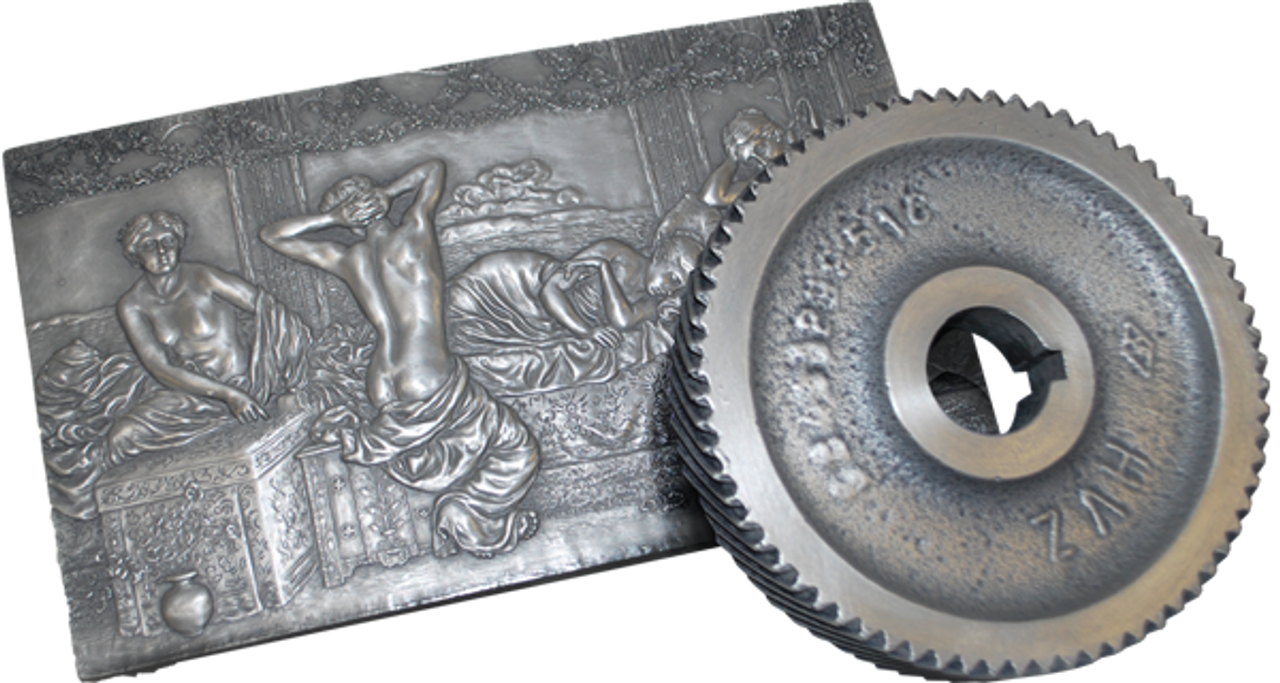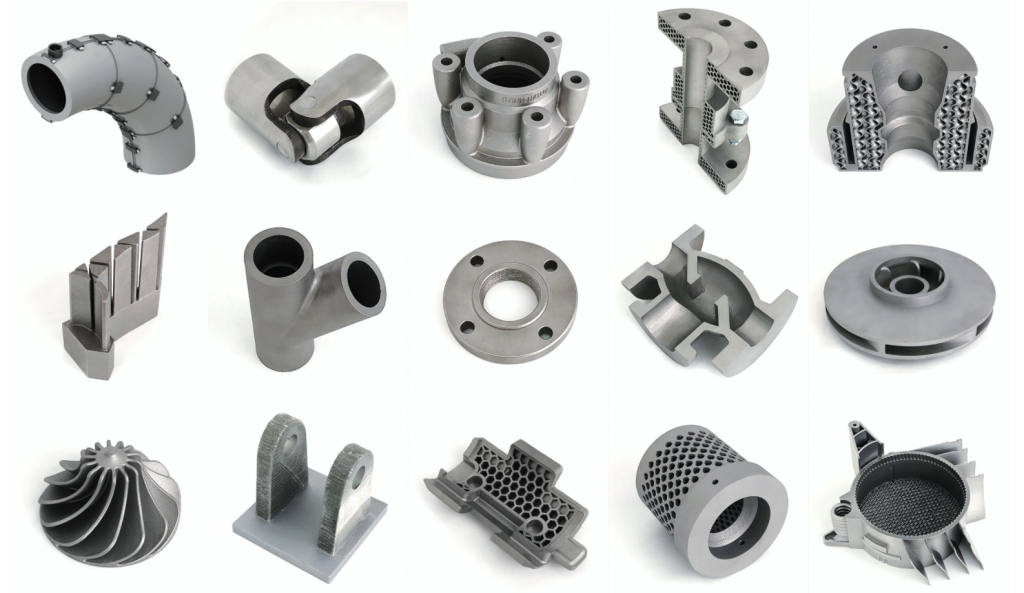How an Aluminum Foundry delivers high-quality casting solutions for all industries
Exploring the Crucial Applications and Use Aluminum Shop in Modern Manufacturing
Aluminum foundries play a vital role in modern-day manufacturing, serving diverse industries with their special residential properties. From auto components that boost gas performance to aerospace frameworks that focus on weight, light weight aluminum's versatility appears. Its applications reach construction and consumer electronics, highlighting its durability and energy efficiency. However, the innovations in light weight aluminum spreading methods and future patterns call for a closer assessment, as they may redefine its effect on manufacturing.
The Role of Light Weight Aluminum Foundries in Automotive Production
As the auto sector significantly focuses on light-weight products to boost fuel efficiency and performance, light weight aluminum factories have become crucial factors to manufacturing procedures. These factories focus on producing parts that satisfy the strict demands of modern-day automobiles, such as engine blocks, transmission housings, and architectural aspects. Aluminum's favorable homes-- such as high strength-to-weight ratio, rust resistance, and excellent thermal conductivity-- make it an ideal selection for automobile applications.
Moreover, light weight aluminum factories make use of sophisticated spreading methods, including die spreading and sand spreading, to create detailed and resilient components. This ability enables producers to enhance layouts for performance while reducing weight. The usage of aluminum additionally supports sustainability goals, as it is extremely recyclable and lowers energy consumption in automobiles. By facilitating the combination of light weight aluminum right into automotive design, factories play a crucial duty in forming the future of the auto industry, promoting efficiency and advancement throughout the board.
Aerospace Applications: Lightweight Solutions for Trip
Light weight aluminum shops play a substantial role in the aerospace industry, where the demand for lightweight materials is critical for improving fuel effectiveness and performance in aircraft. The special residential or commercial properties of aluminum, including its high strength-to-weight ratio and rust resistance, make it an optimal option for different aerospace elements. These elements include structural parts, engine casings, and landing equipment, which add to total airplane efficiency.
Making use of light weight aluminum alloys, specifically those created with sophisticated spreading strategies, permits the production of intricate designs and intricate forms while lessening weight. In addition, light weight aluminum's recyclability lines up with the aerospace industry's sustainability objectives, minimizing environmental impact. With continual innovations in light weight aluminum factory technologies, suppliers can enhance production processes, bring about boosted efficiency and reduced prices. As the aerospace industry increasingly focuses on advancements that enhance efficiency, aluminum foundries will certainly stay integral to creating lightweight services for modern trip.
Building and Construction: Enhancing Structural Honesty
In the building and building and construction market, a substantial focus is positioned on improving structural stability through using light weight aluminum. Understood for its high strength-to-weight proportion, aluminum supplies sturdiness without endangering on weight, which is essential in modern architectural styles. Its resistance to rust further guarantees durability, making it an excellent product for different architectural parts, including beam of lights, structures, and cladding.
Light weight aluminum likewise facilitates innovative style possibilities, allowing engineers and engineers to develop aesthetically pleasing structures while keeping safety requirements. The product's versatility allows its application in both property and industrial projects, from high-rise buildings to bridges. Furthermore, advancements in light weight aluminum foundry methods have enhanced the precision of light weight aluminum parts, ensuring they satisfy rigorous structure codes. On the whole, the combination of aluminum in construction not just enhances structural honesty yet also adds to sustainable structure practices, given its recyclability and energy-efficient manufacturing techniques.
Consumer Electronic Devices: The Surge of Light Weight Aluminum in Innovation
In the domain of customer electronic devices, light weight aluminum has actually gotten importance because of its lightweight layout advantages and exceptional thermal conductivity. This shift not only enhances item transportability but likewise improves device efficiency by efficiently dissipating warmth. As modern technology remains to progress, the role of light weight aluminum in creating efficient and smooth devices is significantly considerable.
Lightweight Design Advantages
As customer electronics progress, the need for light-weight yet resilient products has actually risen, making aluminum a progressively popular option among producers. Its reduced thickness permits the development of smooth tools that are simple to make use of and carry, considerably boosting transportability. The strength-to-weight ratio of aluminum warranties that items can withstand everyday wear and tear without compromising efficiency. In addition, the malleability of light weight aluminum enables manufacturers to create elaborate forms and forms, better adding to innovative appearances and capability. This light-weight feature likewise plays a necessary duty in power efficiency, as lighter devices call for much less power to operate. Therefore, aluminum not only meets the progressing visual demands however likewise lines up with the modern-day concentrate on sustainability in customer electronics.
Thermal Conductivity Benefits
Thermal conductivity is an important element in the performance of customer electronics, and aluminum excels in this domain. Its high thermal conductivity enables efficient warmth dissipation, which is essential for keeping optimal operating temperatures in tools such as smart devices, laptops, and video gaming consoles. By helping with fast warmth move far from delicate components, light weight aluminum aids stop overheating, consequently improving efficiency and lengthening device longevity. Moreover, the lightweight nature of light weight aluminum complements its thermal buildings, making it an optimal option for mobile modern technology. As manufacturers increasingly focus on performance and energy efficiency, light weight aluminum's duty in thermal management becomes a lot more substantial, bring about its growing fostering in modern-day digital designs. This pattern highlights light weight aluminum's importance in consumer electronic devices development.
Marine Sector: Corrosion Resistance in Harsh Atmospheres
Deterioration resistance is a critical factor in the marine market, where equipment and structures are routinely exposed to harsh deep sea settings. Aluminum, specifically in its alloy kinds, supplies considerable benefits hereof. Its all-natural oxide layer supplies a protective barrier that protects against rust, making it optimal for vessels, docks, and other aquatic applications.
Marine-grade aluminum alloys, such as 5083 and 6061, are especially created to withstand the destructive effects of deep sea and atmospheric conditions. These alloys not just resist deterioration but likewise maintain structural honesty and strength gradually. Applications range from hulls and superstructures of ships to elements in overseas platforms.
The lightweight nature read of light weight aluminum further improves its suitability, allowing boosted fuel effectiveness and convenience of handling - aluminum casting company. As the aquatic sector remains to focus on longevity and performance, aluminum stays a crucial material choice for withstanding deterioration popular marine settings
Advancements in Light Weight Aluminum Spreading Techniques
While traditional aluminum casting techniques have offered the sector well, current technologies are changing the landscape of aluminum manufacturing. Techniques such as 3D printing of cores and molds are acquiring traction, enabling for fast prototyping and minimized preparations. This innovation makes it possible for suppliers to develop intricate geometries that were formerly hard to attain with standard spreading approaches. In addition, innovations in die-casting modern technology, consisting of using high-pressure die-casting (HPDC), have actually enhanced the precision and surface finish of actors light weight aluminum parts, causing boosted efficiency in different applications.
Furthermore, the adoption of investment spreading has actually enabled higher design freedom and lowered product waste. aluminum metal casting. Innovations in alloy make-ups are likewise significant, as they boost mechanical homes and corrosion resistance. On the whole, these growths not only streamline manufacturing processes yet likewise add to even more sustainable practices within the light weight aluminum foundry field, making it adaptable to the advancing needs of modern production
Future Trends in Light Weight Aluminum Foundry Manufacturing
The future of light weight aluminum factory production is poised for considerable change with automation, enhancing performance and precision in manufacturing procedures. Sustainable methods are increasingly ending up being a top priority, as foundries seek to lessen their ecological impact while satisfying expanding governing needs. Additionally, developments in alloy development will allow the production of more powerful, lighter products tailored for diverse applications, driving development in the market.
Automation in Shop Processes

Lasting Manufacturing Practices
An expanding focus on sustainable production practices is improving the future of light weight aluminum foundry manufacturing. Market leaders are increasingly taking on energy-efficient innovations and reusing initiatives to decrease waste and minimize carbon footprints. Making use of recycled aluminum substantially lowers power consumption contrasted to primary light weight aluminum production, making it a recommended choice for eco conscious suppliers. In addition, cutting-edge casting methods are being developed to improve material effectiveness and reduce discharges. Firms are also spending in renewable energy resources, such as solar and wind, to power their operations sustainably. Aluminum Casting. By integrating these techniques, the aluminum factory sector not only satisfies regulative needs yet also responds to consumer demand for greener products, inevitably leading the means for a more lasting production landscape
Advanced Alloy Growth
Developments in light weight aluminum alloy growth are set to play a considerable function in the future of shop production, particularly as sustainability and performance demands intensify. The sector is increasingly focusing on creating high-strength, lightweight alloys that can stand up to severe problems while lessening environmental effect. Scientists are checking out cutting-edge make-ups, such as aluminum-lithium and aluminum-scandium alloys, which assure boosted mechanical residential properties and lowered weight. In addition, the assimilation of innovative production strategies, consisting of additive production and accuracy casting, enables more complicated geometries and decreased material waste. As regulatory pressures and customer choices change in the direction of greener options, the advancement of energy-efficient and recyclable alloys will be vital. The future landscape of aluminum foundry production depends upon these innovations in alloy modern technology.

Frequently Asked Inquiries
What Are the Ecological Effects of Aluminum Shop Procedures?
Aluminum foundry procedures can lead to considerable environmental influences, including greenhouse gas emissions, power usage, and waste generation. Furthermore, improper monitoring of contaminants may bring about soil and click to find out more water contamination, affecting neighborhood environments and communities.
Just How Does Light Weight Aluminum Recycling Affect Foundry Processes?
Light weight aluminum recycling enhances factory processes by giving an economical resources, lowering energy intake and discharges. This lasting method increases effectiveness, minimizes waste, and sustains the circular economic climate, benefiting both makers and the environment.
What Precaution Are Carried Out in Aluminum Foundries?
Aluminum shops execute numerous precaution, including personal safety equipment, appropriate air flow systems, regular security training, fire avoidance protocols, and devices upkeep procedures to lessen hazards and ensure a secure functioning environment for all workers.
Just How Do Foundries Ensure High Quality Control in Light Weight Aluminum Spreading?
Foundries ensure top quality control in light weight aluminum casting through extensive product examinations, precise temperature tracking, standard treatments, and normal screening of cast products. These steps assist preserve uniformity, lower defects, and meet industry specs successfully.
What Are the Cost Elements in Aluminum Factory Manufacturing?
Expense consider light weight aluminum shop manufacturing consist of resources rates, power usage, labor expenses, tools maintenance, and overhead costs. Furthermore, production volume and complexity of designs significantly influence overall production prices and productivity.
As the auto sector progressively prioritizes lightweight materials to boost gas effectiveness and performance, aluminum factories have actually ended up being necessary contributors to manufacturing procedures. Aluminum foundries play a significant duty in the aerospace field, where the demand for lightweight products is vital for improving fuel performance and efficiency in aircraft. In addition, improvements in aluminum foundry strategies have boosted weblink the accuracy of aluminum parts, ensuring they meet stringent building codes. While typical light weight aluminum spreading techniques have actually offered the market well, current technologies are changing the landscape of light weight aluminum manufacturing. The use of recycled light weight aluminum substantially decreases energy intake contrasted to key aluminum manufacturing, making it a recommended choice for environmentally conscious producers.